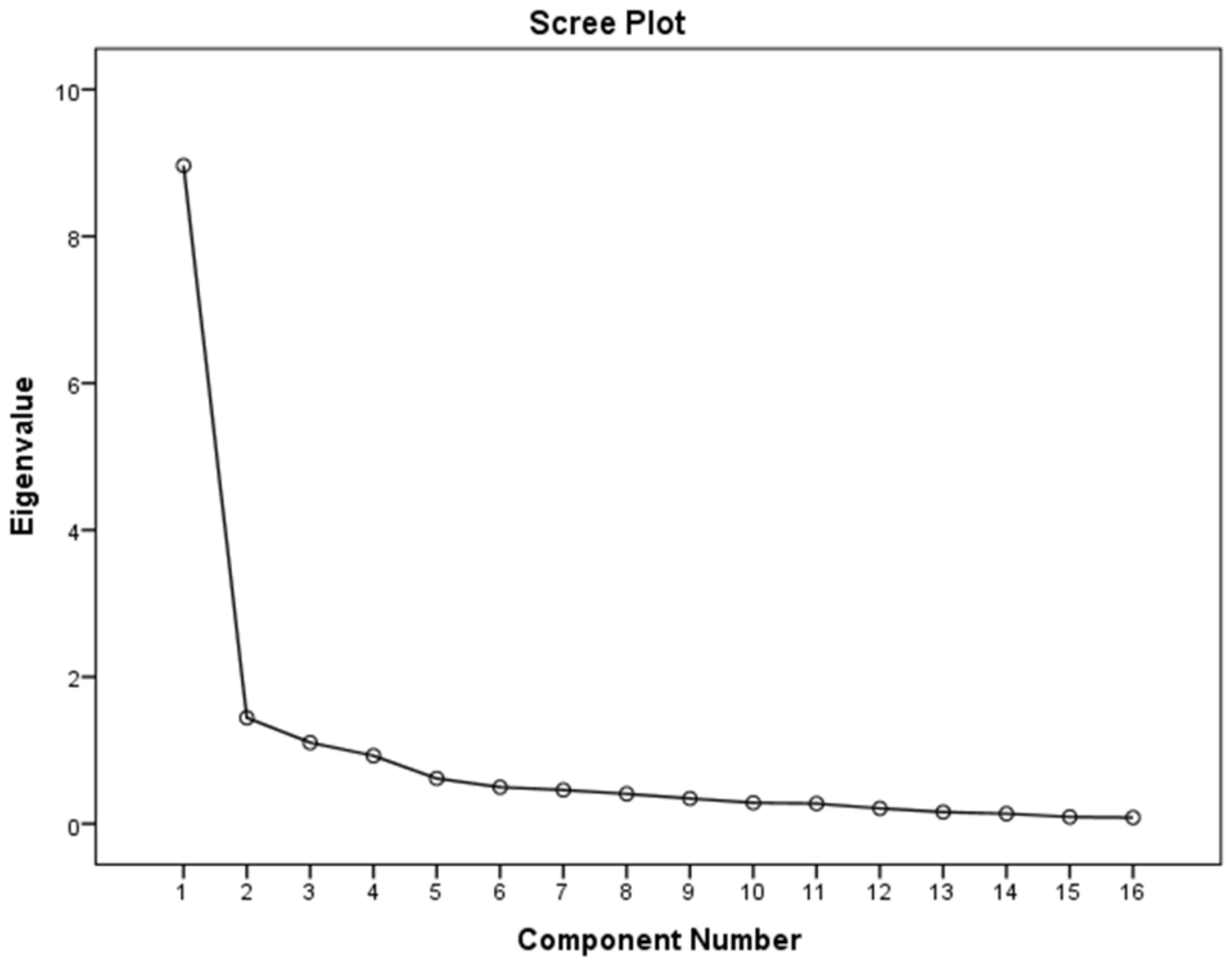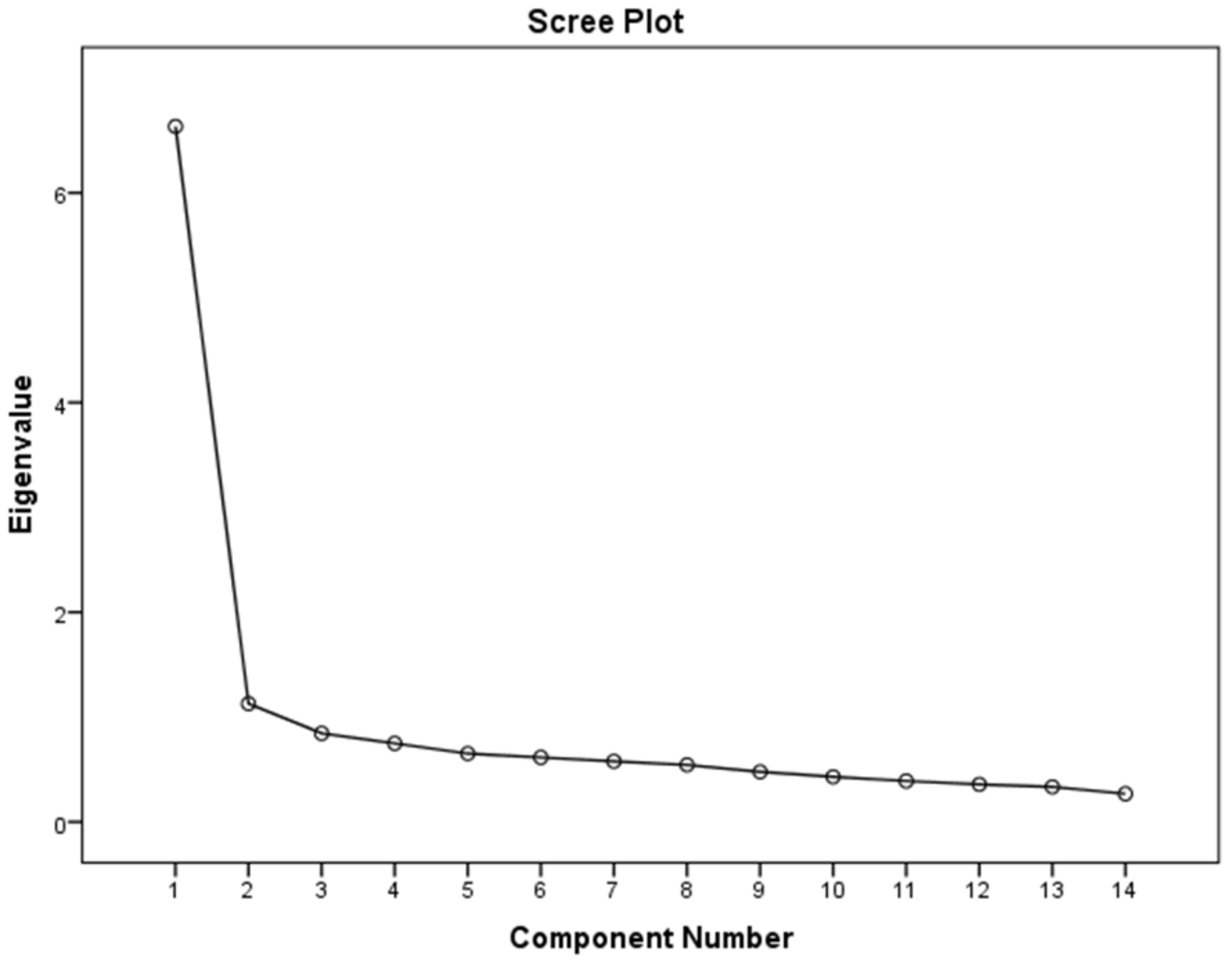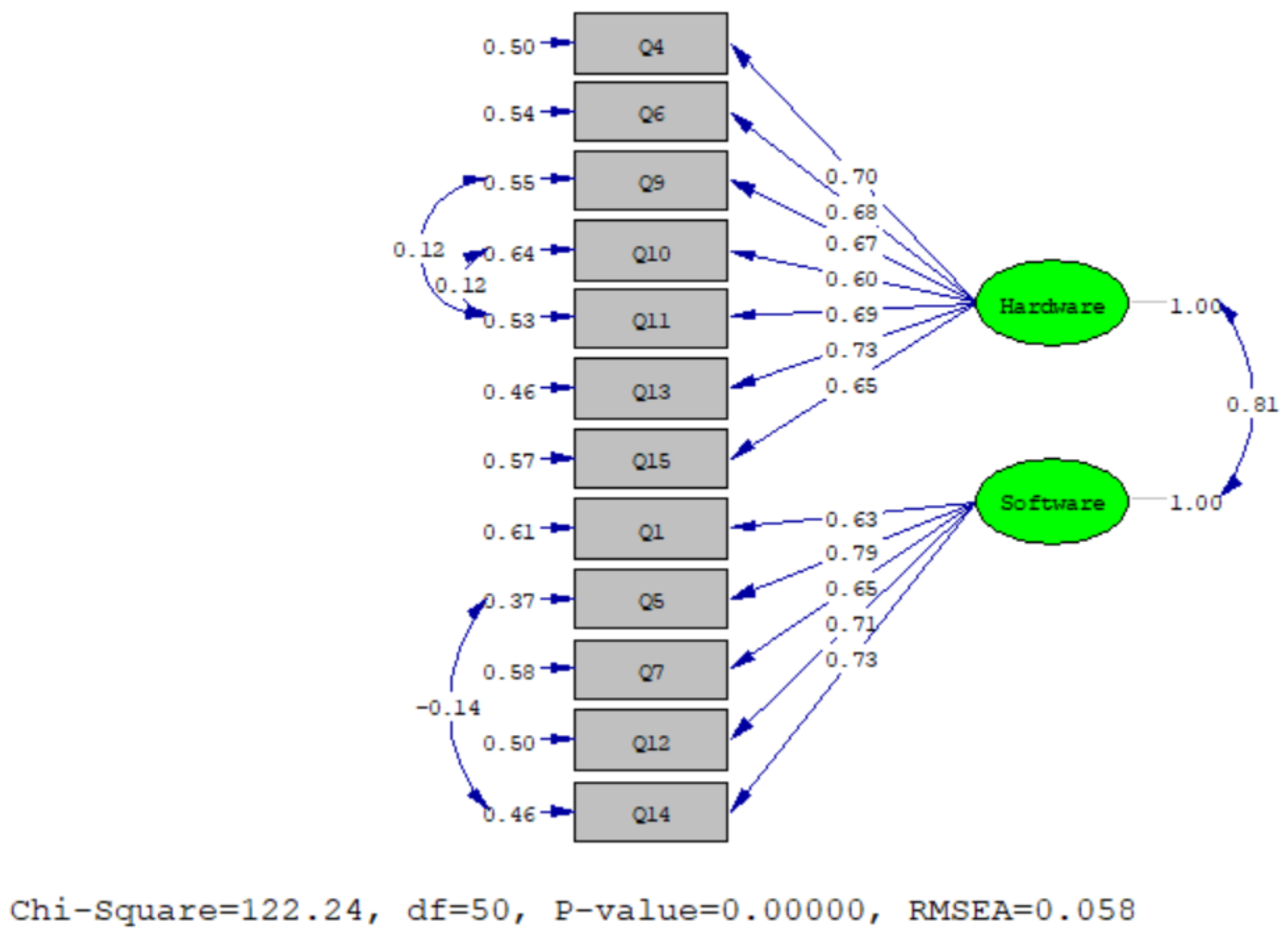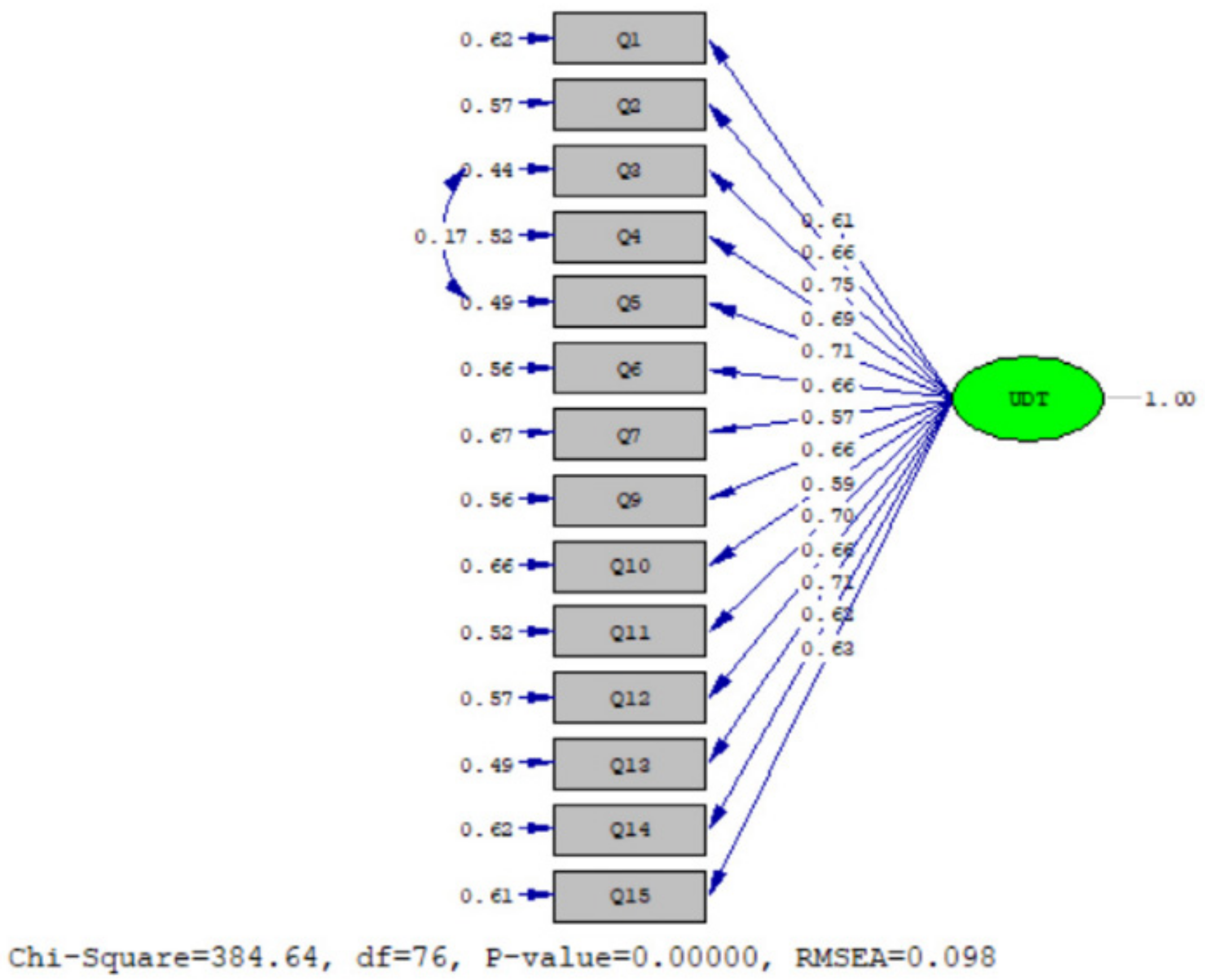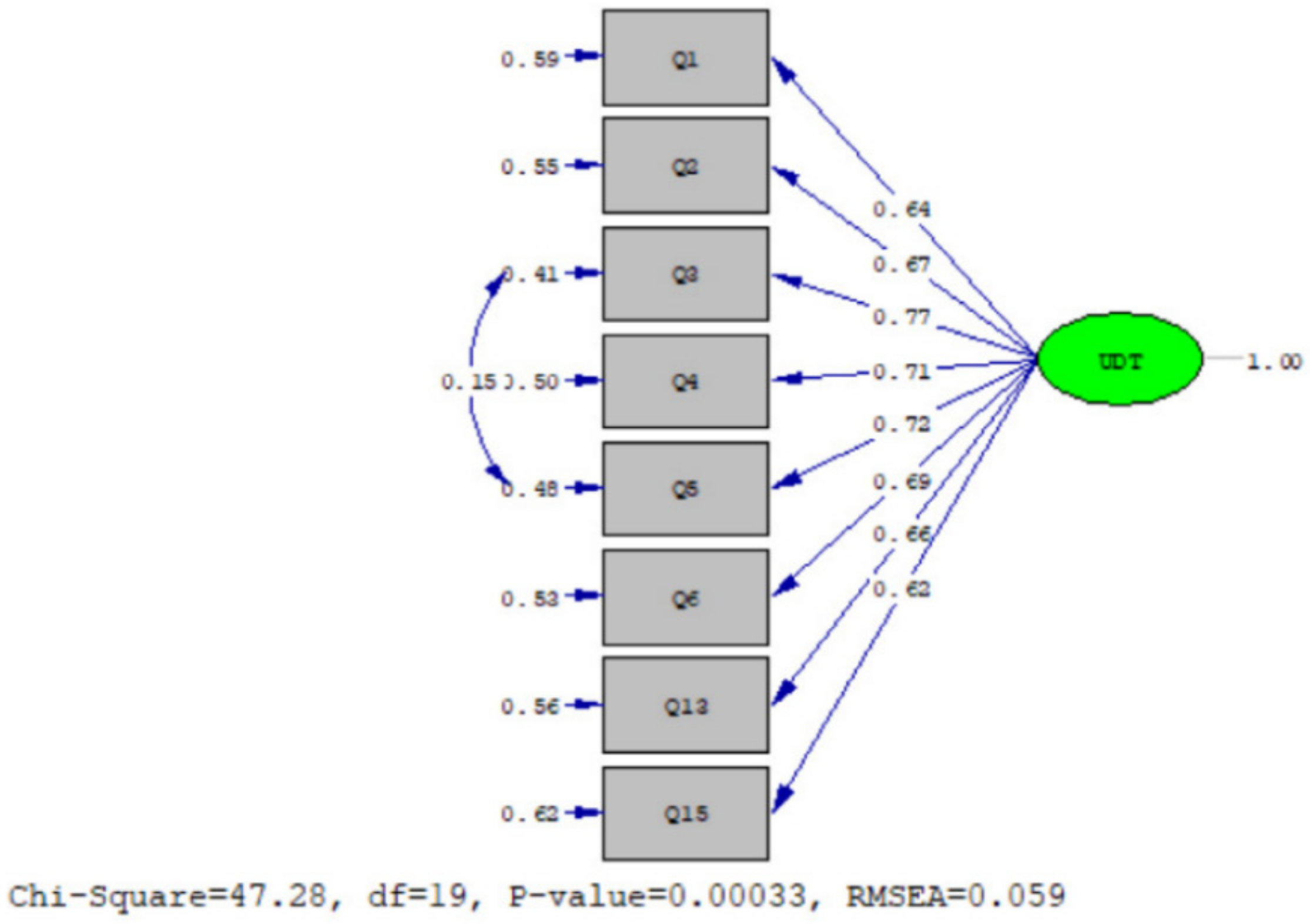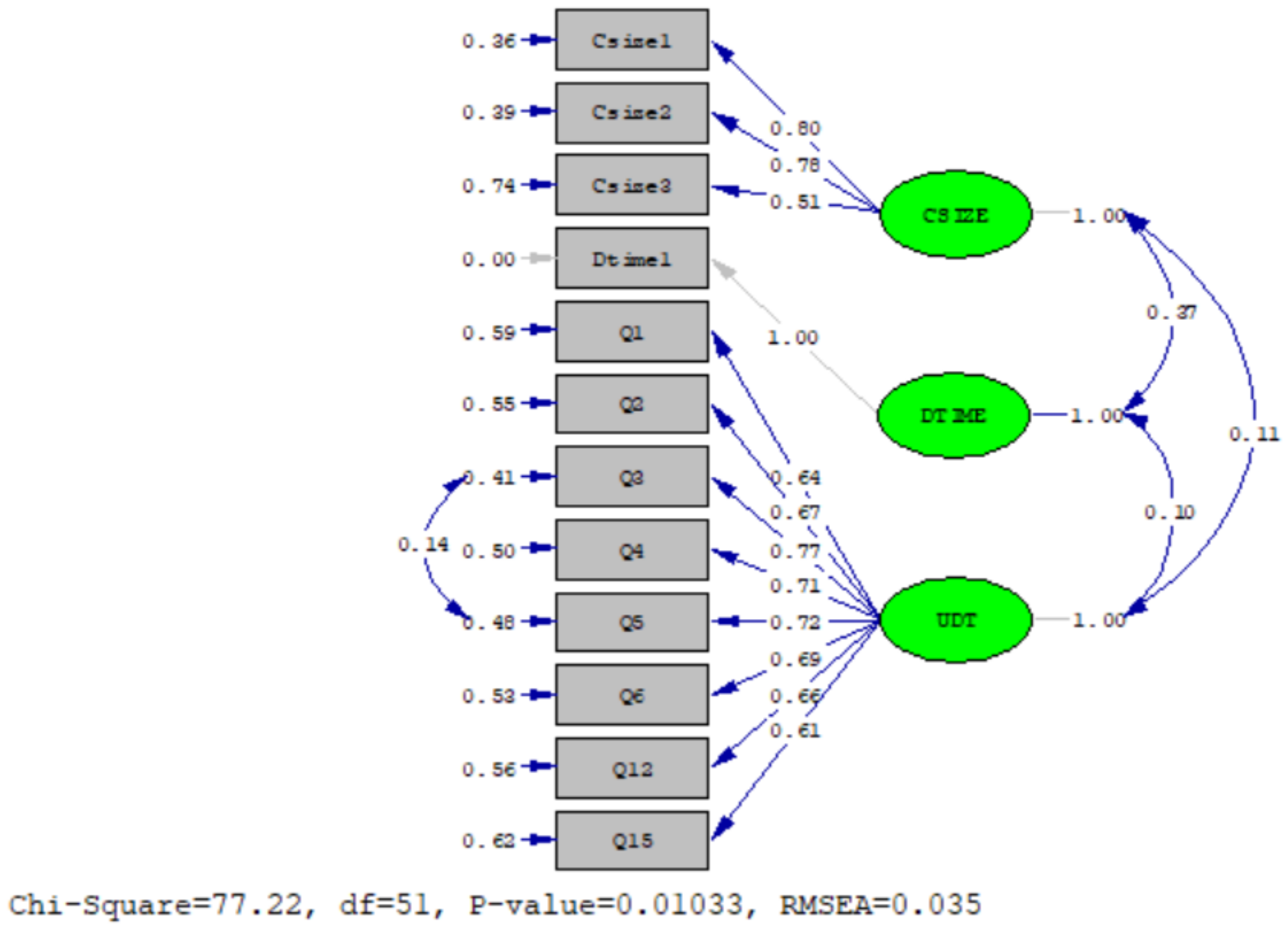1. Introduction
Technology is a concept as old as the history of humanity and continues to maintain its existence and significance throughout our lives [
1]. The birth and utilization of technology caused a revolution in businesses [
2]. Thereafter, it has provided and continues to provide revolutionary contributions to businesses [
3]. Nowadays, the concept of “disruptive technology (DT)” has become a widely accepted scientific term based on the commercial world and is used to describe the effect of technology on decision-making processes. The word “disruptive” refers to the interruption or disruption of the orderly progress of an event, process or activity, but also may mean a major change in structure [
4].
DTs were given the title of “disruptive” because they are technologies that replace existing technologies after they are put into practice. They do this by initially outperforming technology already established in serving the mainstream market. However, they replace existing technologies over time [
5]. Which technologies are disruptive have changed since the day they were introduced as a concept. DTs are typically widely focused on new and revolutionary technologies in the literature [
6]. Therefore, technologies that have a disruptive effect in every period of life differ according to their era [
7].
The revolutionary technologies of the current era are provided by the industrial revolutions of that era [
8]. Consequently, the technologies offered by the industrial revolutions should be evaluated within the scope of DTs [
9]. In the journey of industrial revolutions, which started with production using steam machines, the third industrial revolution took place with the transition of production systems from analog systems to digital systems, and the processes of companies became more complex, consumer demands and expectations changed, and the need for interdisciplinary work brought about the need for connection and communication of all objects via the internet. The need for a new industrial revolution in which the internet interacts has emerged. This need has created The Fourth Industrial Revolution (4IR) [
10].
With the realization of the 4IR, new technologies and business models emerged and transformed the societies and economies in which they lived [
11]. In addition to being very crucial for the modern economy, the concept of 4IR includes innovation and technological progress; it has dramatically transformed products, services, operations, and production processes [
12,
13]. In this context, the technologies offered by this industrial revolution, which is also called 4IR, are accepted as today’s DTs, as they eliminate existing systems and provide more efficient systems to replace them [
9]. This industrial revolution, unlike the other three industrial revolutions, is not a continuation of the previous one (third industrial revolution). It has been developed mainly on the basis of velocity, width/depth and system effect [
14].
The supply chain (SC) is an integrated structure that includes forward and backward activities, in which many units and operations are intertwined [
15]. Supply chain management (SCM) ensures the coordination of all activities in the SC by connecting suppliers, shippers, internal departments, and businesses. SCM includes coordination in SC. This coordination is the movement of products from suppliers to end users. The sharing of information such as sales forecasts, sales dates and promotional campaigns among whole members of the chain is realized through SCM [
16]. 4IR is a new level of company and administration of the SC throughout the life cycle of products [
17]. 4IR dramatically affects SC activities, business processes and models [
18].
4IR enhances integration in the SC. It enables collaborative production and allows businesses to focus on their core competencies. In this way, businesses can develop more value-added products and complementary assets or services [
19]. With this industrial revolution, SCs have become more flexible. Correspondingly, it is easier to react to changes in the market [
20]. 4IR provides an unprecedented increase in operational efficiency and productivity in SCs. It enables this with production ecosystems driven by intelligent systems with autonomous features. In addition, it enables new kinds of advanced manufacturing and industrial operations to emerge [
21]. Additionally, 4IR also enables mass customization. Mass customization allows businesses to address customer demands and consistently introduce new goods and services to the market in SCs. 4IR has the effect of enhancing the transparency of whole stages, from the sending of the order to the end of the product’s utilization life. Furthermore, the cost, quality and competitive advantages of 4IR are some of the principal benefits of this industrial revolution [
22,
23,
24].
4IR enables many competitive advantages with the dynamic structure it provides in business processes. It reduces SC risks. Besides the benefits of time and price, it is also environmentally friendly. In all these respects, it enhances economic, social, and environmental sustainability. It eliminates malfunctions. It optimizes decision making thanks to the end-to-end visibility it provides [
25]. It improves the working conditions of employees with the cooperation of technology and workforce [
24].
As a whole these contributions point out that 4IR is the transformation of economies and industries, and thus SCs, through a combination of technological, social, and business disruptive forces [
11]. The disruptive forces that bring about the transformation referred to are DTs [
26]. Consequently, the technologies with disruptive effects have emerged with 4IR in SCM. These technologies have made and continue to make dramatic contributions to SCs [
27,
28,
29]. Understanding the latest trends in using DTs to shape the world is essential [
30]. Nowadays, consumer habits have changed rapidly, and businesses and SCs must cope with the adversities revealed by this dynamic new environment and adapt to this change [
11]. The COVID-19 pandemic has once again highlighted how significant the utilization of new DTs is to enhance SC visibility, take better action in case of SC disruptions, and build more resilient SCs [
31]. For companies to benefit from the above-mentioned contributions and carry on existing in a global competitive environment, they must pursue current technological developments, current trends, innovations and research, and invest in these technologies [
32].
In order to understand to what extent these facts exist in the external world and to what extent they interact, it is necessary to measure them concretely. Measuring is defined as assigning numbers to objects [
33]. Scale development studies are very significant to embody the abstract and to quantify qualitative findings [
34,
35]. To measure the level of DT use of a company, to compare it with the average of the industry in which it operates, or to measure the level of DT use of a SC is only possible with a measurement instrument developed in this field. Measuring the level of DT use is significant and necessary both to see to what extent the company benefits from them and to compare the company with the industry in which it operates, both locally and globally. A scale developed in this field also allows the relationship of utilizing these technologies for different operations and the effect of these operations to be analyzed quantitatively in SCs, in addition to measuring the utilization level of the DTs.
In the current age, using technologies offered by the period is not a necessity, but a compulsion, for businesses to continue their operations, enhance their performance and gain a competitive advantage [
36]. 4IR has many new DTs to offer [
37]. The purpose of this study is to develop and validate a measurement instrument for SCM practices in the technology field. In this study, the technologies offered by 4IR within the scope of DTs within the scope of the scale development study, based specifically on those that are frequently utilized in SCs in the existing literature. The remainder of this article is developed as follows:
Section 2 reviews the conceptualization of DTs, the theoretical background of the study, and explains their characteristics, opportunities and threats.
Section 3 presents the empirical findings on which the scale development study is based. This scale was developed as the “Using Disruptive Technology Scale (UDTS)”. In the study, the scale development steps are given separately, and the scale has validity and reliability criteria. The consequences are presented in
Section 4, and it ends with the final section in
Section 5.
4. Discussion
The measurement is a concept that has been the subject of discussion since ancient times [
110]. It is one of the most basic concepts that enables social sciences to approach natural sciences [
111]. In addition, it is the first stage encountered when a study tries to break away from theoretical context and move to the empirical level. As well as the purpose for which the measurement is made, the means by which it is made is one of the indispensable elements of the measurement methods [
112].
In the current era, SCs of which they are members, not businesses, compete, and DTs have effects on SCs in many aspects, especially on SC performance [
113]. In addition to enhancing SC performance, DTs have a significant role in constructing more flexible, more efficient, more visible and more resilient SCs. The COVID-19 pandemic has revealed the need to reevaluate current SC approaches and restructure SCs in recent past. This restructure requirement covers enhancing the utilization of DTs [
30]. For these reasons, it is extremely critical and significant to investigate the extent to which DTs are utilized, to measure the current utilization levels of these technologies, and to examine their effects on operations in SCs. In order to determine these, it is essential to first measure their level of utilization. This can only be possible with a measurement instrument developed in this field.
Many technological changes have taken place from the past to the present [
114] and DTs change according to the current era [
115]. In this study, 4IR technologies were taken as DTs and current DTs that are widely used in SCs were preferred. With the inductive method, we tried to obtain information about the SCs with questionnaires collected from the companies operating in different industries. The technology that best explains the single-factor structure obtained in the final model is artificial intelligence technology, with the highest factor loading (λ = 0.77). This technology is frequently discussed today and has an enhancing utilization level in SCM. It enables machines to carry out functions that require intelligence, without humans, by offering machines the intelligence of humans [
116]. It is estimated that the contribution of this technology to the global economy will be USD 15 trillion by 2030 [
117].
Big data analytics is the second technology that best explains the structure (λ = 0.72). Big data technology is critical in SCs. It enables in-depth information on SCs, supports right decision making, predicts SC performance and positively affects performance [
118,
119]. The technology with the lowest factor loading and least explaining the structure is 5G because it is a technology that has just started to spread around the world (λ = 0.72). It refers to the fifth-generation wireless technology and has only been utilized for two years [
120].
Since the scale items generated in the study focused on the level of UDT rather than agreeing with an opinion or behavior, the factor loadings obtained for the items in the study were lower than the scales in different fields. Moreover, 3D printers, a crucial technology in SCs, were excluded from the study due to their low loading (λ = 0.530). Although 3D printers are a technology that is a very high trend today and makes significant contributions to SCs, the current level of utilization of this technology is lower when it is compared with artificial intelligence and big data analytics technologies. According to a study conducted in 2020, the utilization of 3D printers will approximately triple in the next five years [
121]. In other words, the loading of this technology is lower because its current utilization level is lower compared to other DTs.
The fact that the AVE value was below 0.50 in this study is due to the partially low loading values. This is due to the same reason as the utilization of 3D printer technology. Since the scale is not a measurement based on an opinion or behavior, it directly measures the level of technology use, and since companies that never use the relevant technologies answer the item as 1 (I totally disagree), it decreases the loading values of the related items. Such a strict response in items based on opinion either does not exist at whole items or is valid for very few items of the scale. It is a convergent validity value that gives results depending on the AVE factor loading values [
122]. However, the scale has convergent validity when the CR value is above 0.60 according to the literature [
104]. Since this scale development study is a completely new scale introduced to the SC literature, the results could not be compared with other studies.
4.1. Theoretical Contribution
The fact that a lot of study has been performed in a field so far does not mean that a new contribution cannot be made to that field. The deepest and most fundamental contribution that can be made to any field can be made in terms of measurement, because that field cannot be fully assessed when measurements cannot be made in that field [
123]. Despite the enhancing emphasis on the contribution of DTs to SCM, there is a gap in enabling a measurement instrument that can evaluate their utilization. Correcting the lack of a measurement instrument developed in this field in the literature is the most crucial theoretical contribution of this study.
4.2. Managerial Implication
4IR has brought with it new DTs and digital transformation. Digital transformation is more than an essentialness; the DTs that 4IR enables are also an opportunity for countries to enhance their economic, social and environmental benefits [
124]. Policy makers should engage in practices that foster the UDT and the disruptive innovation that these technologies stimulate [
125].
By using the UDTS, SC managers or leaders can compare the UDT of the industries in which they operate, and with this direction they can increase their investments in the DTs in which they are behind compared to the industry. By examining the effects of DTs on SC performance, they can enhance the level of using that technology by becoming aware of which technology contributes more to SC performance. The effects of DTs on the entire SC can be examined, as well as on the basis of a specific SC operation. Improvements can be made after this study. Furthermore, UDT affects the way SC managers make strategic and operational decisions [
126]. Therefore, they can measure the level of utilization of these technologies and benefit from this in their decision-making processes.
4.3. Limitations and Future Research
This study has four main limitations. First, DTs differ according to the related eras. This study deals with 4IR technologies, which are the DTs of current age. Nowadays, the concept of Industry 5.0, which is the fifth industrial revolution, has begun to be handled and discussed by many researchers [
127,
128,
129,
130,
131]. However, before the fifth industrial revolution can be evaluated, it is necessary to have a good understanding of 4IR technologies and to reach the required level of technological maturity [
132]. Measuring the 4IR maturity level is possible with the “Using Disruptive Technology Scale (UDTS)”. Researchers can add different technologies to these technologies and do a scale adaptation study for further research. For instance, they can benefit from this study by adding the currently very popular metaverse technology to the item pool of this study and performing a scale adaptation study in the future. In this sense, this study will form the basis of future research.
The second limitation of the study is that it is based on perception like all other studies based on questionnaire data. Whole studies in which data were collected through questionnaires suffer from the same limitation. Third, DTs are discussed in the context of the SC, and this is a constraint. The number of these technologies used can be enhanced or lessened in different contexts by specifying their theoretical justifications. It is recommended by the authors that the scale name be altered according to that context. Finally, it involves only one type of technology. In other words, this study only contains DTs utilized in the SC. It makes a profound contribution to the literature in this respect, but for researchers and managers who want to consider the technologies utilized in the SC as a whole, they can actualize a scale adaptation study by including information systems utilized in SCs such as enterprise software and enterprise resource planning (ERP) software. In this case, it would be convenient to change the name of the scale to “using supply chain technology scale”. Taking the relevant scale as a two-factor structure with information technologies and DTs factors will enable a better explanation of the structure.
5. Conclusions
SCM is the planning and coordination of whole people, processes and technology involved in constituting value. DTs have now become a part of modern SCs and make enormous contributions to them. Implementing new DTs in SCs is critical to successful SC processes. SC managers must have knowledge of these technologies and understand and know how to utilize them [
133]. They must persuade managers of companies to implement these technologies or enhance their utilization level.
SC is a dynamic environment, and it has to adapt and react to the events and situations going on around it. Nowadays, there are many significant issues that SCs need to adapt to. The requirement of enhancing SC visibility and SC resilience due to the COVID-19 pandemic, and the requirement of enhancing SC sustainability performance to achieve sustainable development goals are just a few examples. DTs enable the most significant contribution to the improvement of SCs related to these issues [
18,
134,
135,
136,
137]. SCs need to be improved in line with these strategic goals. Consequently, the necessity of current research in SCs is a never-ending cycle. This developed and validated scale will contribute greatly to future research and SC literature.
Explanatory and confirmatory factor analyzes show that the UDTS scale has only one dimension which consists of cyber-physical systems (CPS), internet of things (IoT), artificial intelligence, autonomous robots, big data analytics, blockchain, simulation and 5G technologies. The fact that 4IR technologies are gathered under a single roof in the literature confirms that the scale has a one-dimensional structure reached in line with the empirical results. Moreover, the technologies that explain this dimension as a result of the study are the technologies that are widely utilized in SCM and are confirmed by the theoretical background of the study. In both respects, the study is validated by the relevant literature with the theoretical justifications stated [
7,
11,
18,
24,
26,
31,
72,
121,
135].
As stated above, this scale has perfect model fit values in terms of x2/df, GFI, SRMR, CFI, NFI and AGFI indices. It also has an acceptable level of model fit index value in terms of the RMSEA. The scale also has convergent validity and data that does not have the bias effect. This scale can be utilized with confidence in research in which DT will be a variable in different fields of the social sciences in its current form. In addition, it can be utilized to determine levels of UDT. Utilizing this scale, relationships and impacts can be examined throughout the SC or within its specific operations.

